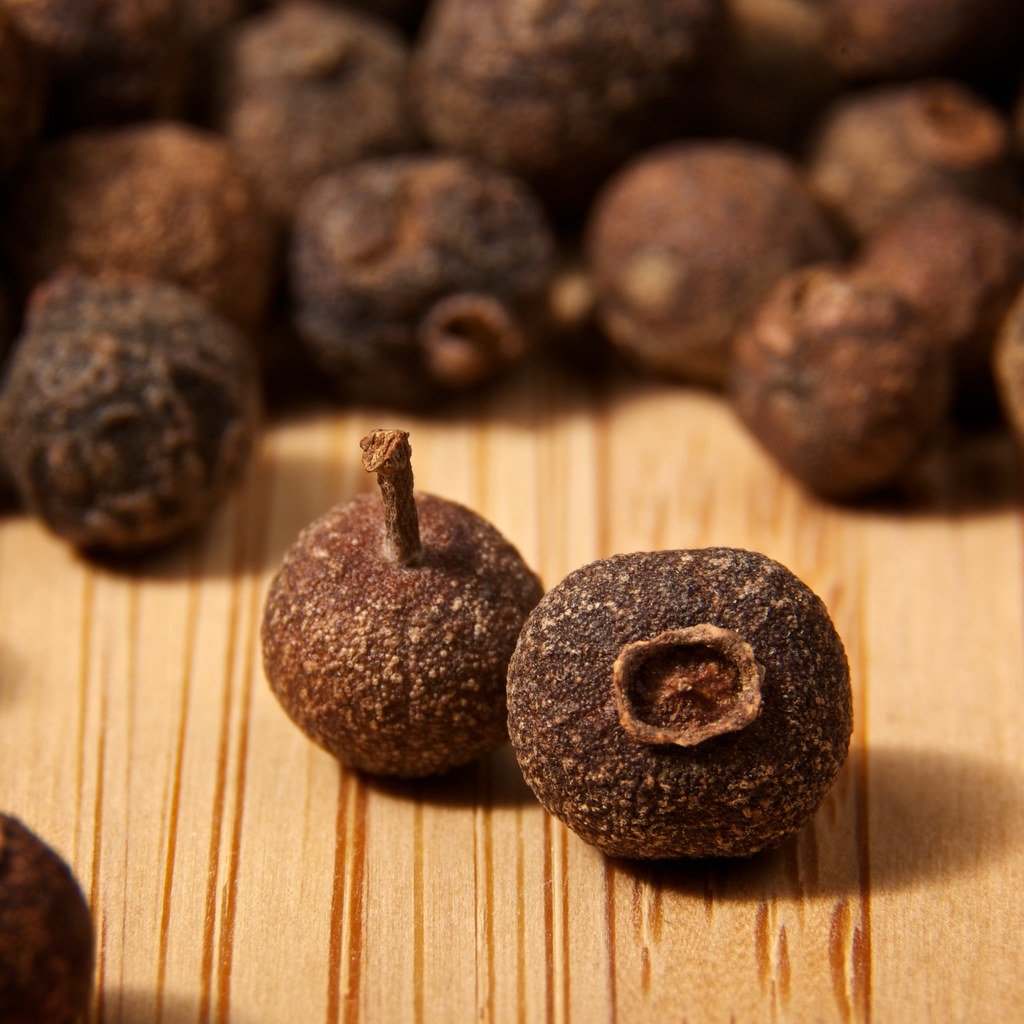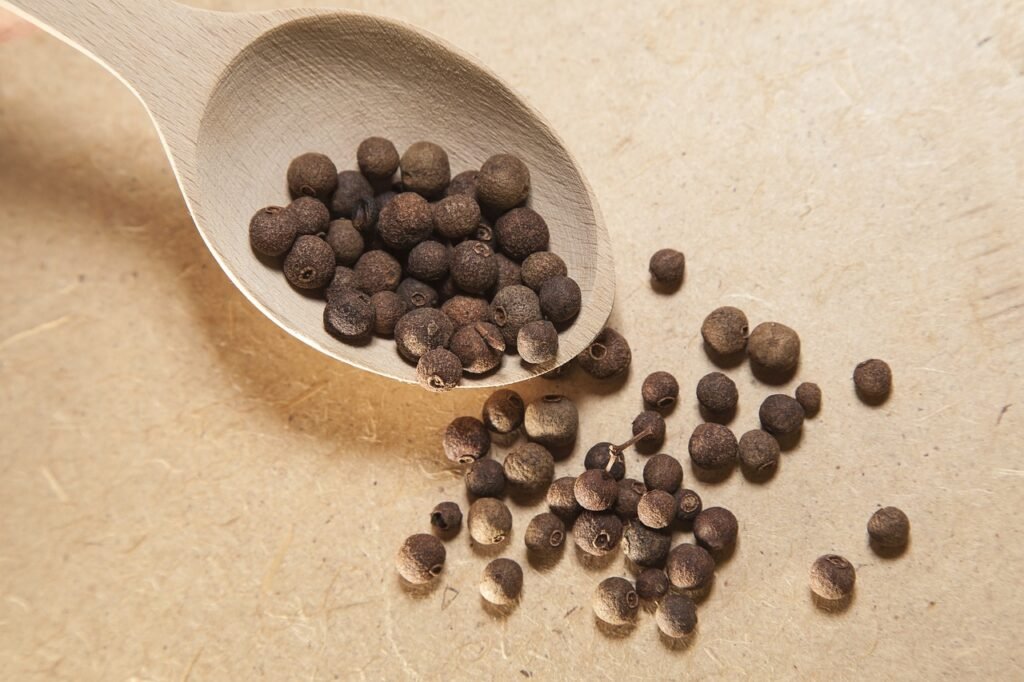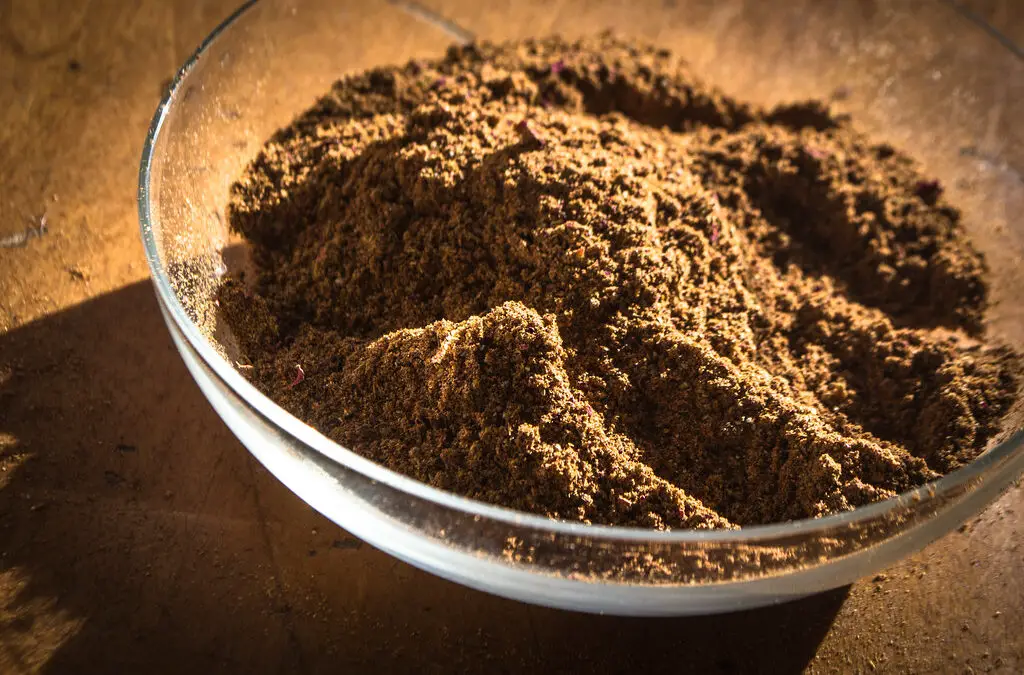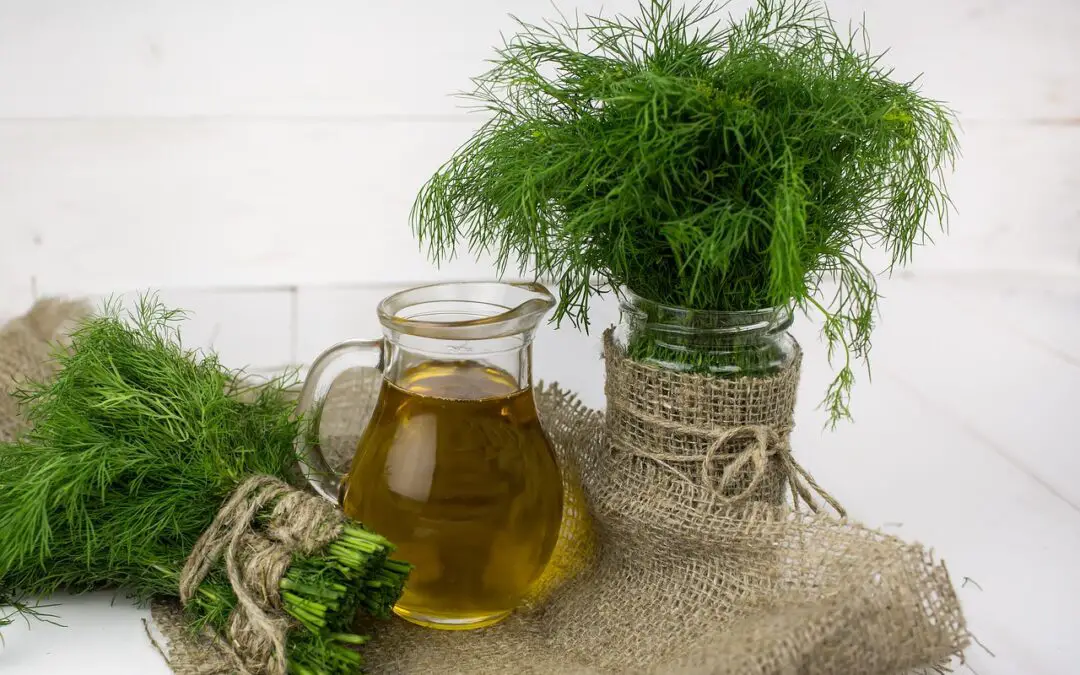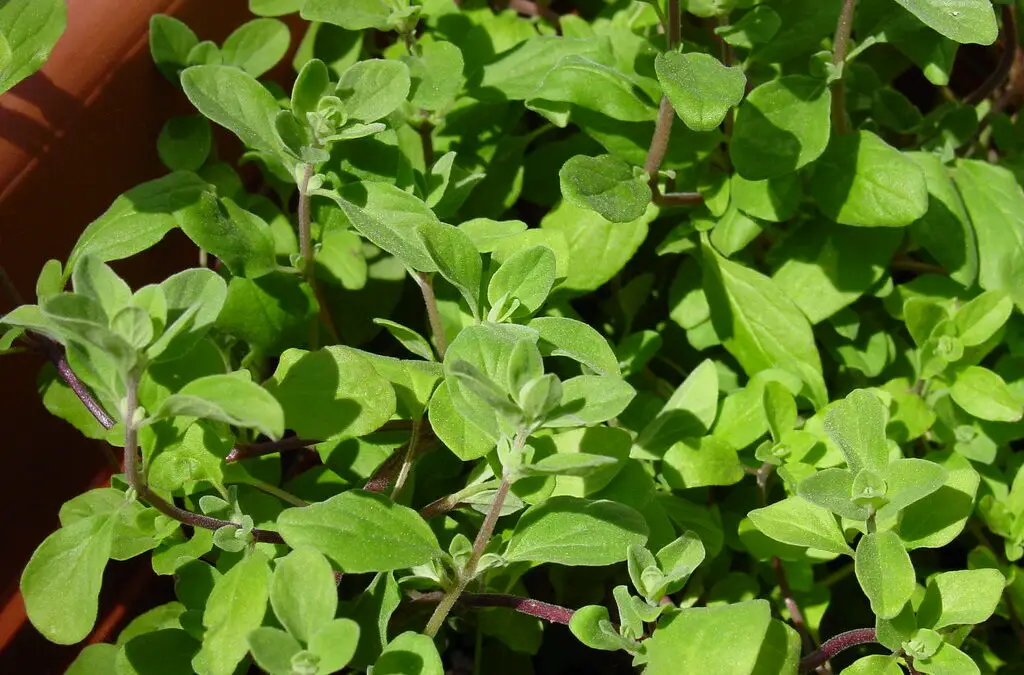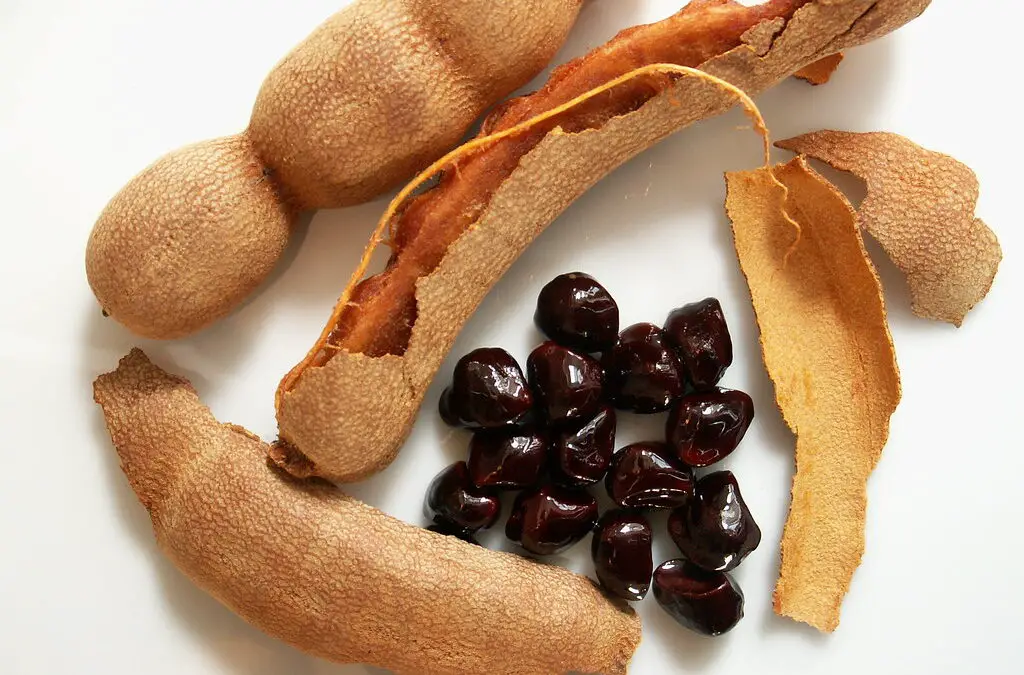Allspice, also known as Jamaica pepper, is a spice that is commonly used in Caribbean and Latin American cuisine. Despite its name, allspice is not a blend of spices, but rather a single spice that is derived from the dried berries of the Pimenta dioica tree. The tree is native to the West Indies, Central America, and Mexico, and it is now cultivated in other parts of the world, including India and Sri Lanka.
Allspice is a versatile spice that can be used in both sweet and savory dishes. It has a warm, sweet, and slightly spicy flavor that is reminiscent of cinnamon, nutmeg, and cloves. In Caribbean cuisine, allspice is a key ingredient in jerk seasoning, which is used to flavor meats and seafood. It is also used in sweet dishes such as pumpkin pie and gingerbread, as well as in pickling and preserving. Allspice has a long history of use in traditional medicine, and it is believed to have a variety of health benefits, including anti-inflammatory and antioxidant properties.
Overview
Allspice (aka Jamaica pepper), is a spice that is commonly used in cooking. It is derived from the dried berries of the Pimenta dioica tree, which is native to the Caribbean and Central and South America. Allspice is so named because it has a flavor that is reminiscent of a combination of several spices, including cinnamon, nutmeg, and cloves.
Description
Allspice berries are small, brown, and wrinkled, and they have a pungent, spicy aroma. They are commonly used in cooking to add flavor to a variety of dishes, including meats, stews, and desserts. Allspice can be used whole or ground, and it is often added to spice blends like jerk seasoning and pumpkin pie spice.
History
Allspice has a long history of use in the Caribbean, where it has been used for centuries by indigenous peoples and later by European colonizers. It was first introduced to Europe in the 16th century, where it quickly became popular as a flavoring for meats and other dishes. Today, allspice is widely used in cuisines around the world, and it is also used in the production of perfumes and soaps.
In conclusion, allspice is a versatile and flavorful spice that has a long and interesting history. Whether you are a professional chef or a home cook, allspice is a valuable addition to any kitchen.
Culinary Uses
Flavor Profile
Allspice is a versatile spice that is used in a wide range of culinary applications. The flavor profile of allspice is a combination of cinnamon, nutmeg, and cloves, with a hint of pepper. It has a warm, spicy, and slightly sweet taste that makes it a popular ingredient in many dishes.
Recipes
Allspice is a staple in Caribbean and Latin American cuisine, where it is used in many traditional dishes. It is also commonly used in Middle Eastern, Indian, and North African cuisine. Here are a few recipes that showcase the unique flavor of allspice:
- Jerk Chicken: A classic Jamaican dish, jerk chicken is marinated in a blend of spices that includes allspice, thyme, and scotch bonnet peppers. The chicken is then grilled over an open flame, resulting in a smoky and spicy flavor that is sure to please.
- Pumpkin Soup: This hearty soup is a staple in many Caribbean households. It is made with pumpkin, coconut milk, and a blend of spices that includes allspice, ginger, and nutmeg. It’s the perfect comfort food on a chilly day.
- Gingerbread Cookies: Allspice is a key ingredient in many gingerbread cookie recipes. The warm and spicy flavor of the spice pairs perfectly with the sweetness of the molasses and ginger.
Allspice can also be used in savory dishes, such as stews, curries, and marinades. It pairs well with meats, vegetables, and grains. When using allspice in your cooking, be sure to start with a small amount and adjust the seasoning to taste.
Health Benefits
Antimicrobial Properties
Allspice contains a compound called eugenol, which has potent antimicrobial properties. Eugenol can help fight off harmful bacteria and fungi, including those that cause foodborne illnesses and infections.
Studies have shown that eugenol can inhibit the growth of bacteria such as Escherichia coli (E. coli), Salmonella, and Staphylococcus aureus. It can also help prevent the growth of fungi such as Candida albicans, which can cause yeast infections.
Digestive Health
Allspice has been used for centuries as a digestive aid. It possesses the potential to enhance the generation of digestive enzymes, thereby facilitating better digestion and averting common issues like bloating, gas, and constipation.
Moreover, allspice holds the ability to calm the digestive system and alleviate inflammation within the tract. This can be especially beneficial for individuals with inflammatory bowel diseases such as Crohn’s disease and ulcerative colitis.
Allspice also contains dietary fiber, which can help promote regular bowel movements and prevent constipation. One tablespoon of allspice contains approximately 3 grams of fiber.
In conclusion, allspice has several potential health benefits, including antimicrobial properties and digestive health benefits. However, more research is needed to fully understand the extent of its health benefits and potential side effects.
Other Uses
Fragrance and Perfume
Allspice has a warm and spicy aroma that makes it an excellent ingredient for fragrances and perfumes. The essential oil extracted from the berries is used in the production of perfumes, soaps, and other cosmetic products. The oil is also used in aromatherapy to help relieve stress and promote relaxation.
Traditional Medicine
Allspice has been used for centuries in traditional medicine to treat a variety of ailments. The plant contains eugenol, a compound that has antiseptic and anesthetic properties. As a result, allspice is often used to relieve pain, reduce inflammation, and treat infections.
In some cultures, allspice tea is used to treat digestive problems and menstrual cramps. The tea is made by steeping allspice berries in hot water for several minutes. The warm and spicy flavor of the tea makes it a popular beverage in many countries.
Allspice also has a long history of use as a natural remedy for colds and flu. The plant contains vitamin C, which helps boost the immune system and fight off infections. Some people also use allspice oil as a natural remedy for headaches and muscle pain.
Overall, allspice is a versatile plant that has many uses beyond cooking. Its warm and spicy aroma makes it a popular ingredient in perfumes and other cosmetic products, while its medicinal properties have made it a staple in traditional medicine for centuries.
Conclusion
Allspice (aka Jamaica pepper), is a versatile spice that is widely used in various cuisines worldwide. Its unique flavor profile, which combines the taste of cinnamon, nutmeg, and cloves, makes it a popular ingredient in sweet and savory dishes alike.
Aside from its culinary uses, allspice also offers numerous health benefits. It contains antioxidants that help reduce the risk of chronic diseases such as cancer, heart disease, and diabetes. It also has anti-inflammatory properties that can alleviate pain and reduce swelling.
When purchasing allspice, it is important to ensure that it is of high quality. Look for whole allspice berries, which retain their flavor and aroma better than pre-ground allspice. It is also important to store allspice properly to maintain its freshness and flavor.
Overall, allspice is a valuable addition to any kitchen. Its unique flavor and health benefits make it a versatile and useful spice that is worth exploring.
